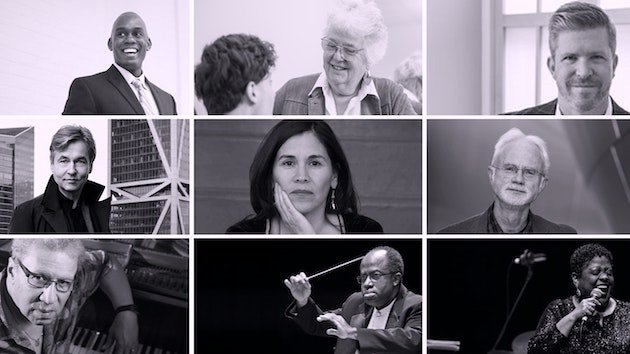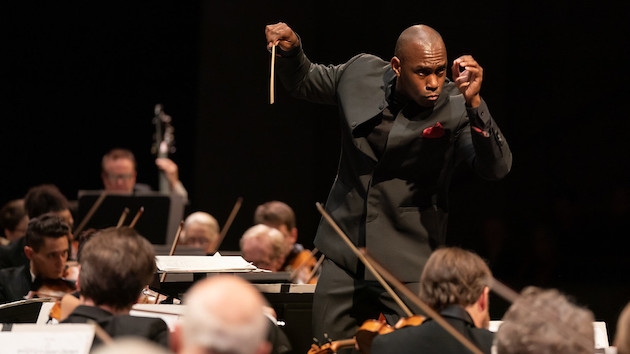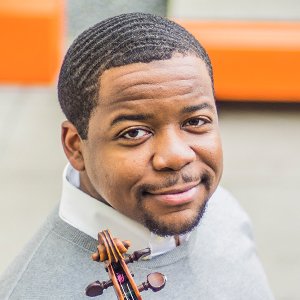
A curtain of indifference seemed to be pulled aside in the arts this summer: many performing organizations have taken first, sometimes sluggish steps to change repertoire and structure to make these things more inclusive of Black and minority voices. But few have moved as determinedly as the San Francisco Conservatory of Music.
To begin with, SFCM established a President’s Advisory Council on Equity and Inclusion, anchored by Black students, alumni, faculty, and community leaders, and then raised $1.5 million to fund a series of recommendations from the committee. The school’s commitments include creating ten fully funded scholarships for Black students, recruiting more Black faculty, staff, and board members, expanding inclusion and anti-racism training for faculty, staff, and students, and developing coursework on the Black experience in America.
But the crown jewel in this push to expand diversity is a partnership now underway between SFCM and the San Francisco Symphony to commission 10 new works from different composers over the course of 10 years, some to be performed by the Symphony and some by the Conservatory. The commissions are each worth $15,000.
Crucially, all the applications go through a blind review process, like orchestral auditions, so that name recognition and connections do not affect the results of the search. The review committee consists of composer and pianist Anthony Davis; singer and SFCM Roots, Jazz, and American Music faculty Carmen Bradford; conductor and Berkeley Symphony Music Director Joseph Young; composer Germaine Franco; composer and SFCM faculty Elinor Armer; composer and conductor John Adams; SF Symphony Music Director Esa-Pekka Salonen; Oakland Symphony Music Director Michael Morgan; and SFCM Music Director Edwin Outwater.
“The San Francisco Symphony is pleased to partner with our colleagues at the San Francisco Conservatory to maximize the value these commissions will bring to early-career Black American composers,” said San Francisco Symphony CEO Mark C. Hanson. And Joseph Young emailed SFCV that “The Emerging Black Composers Project is a bold initiative that will help to make lasting changes to the American music landscape. I am honored to be part of a project that will create opportunities for my brothers and sisters so their voices will be heard.”

DuMarkus Davis, Class of ’18, is on the Alumni Council and the Advisory Council, and the founder of Musicbuk, an Atlanta startup he’s been known to describe as “Uber for music teachers.” Davis was a signatory to the call for action letters to SFCM President David Stull that led directly to these initiatives. He was highly impressed at the favorable response of Stull and the SFCM senior leadership, saying, “I definitely think that what’s going on is a huge step in the right direction. I’d go so far as to say that the Conservatory has really laid the blueprint for what other classical music organizations and conservatories should model themselves after if they truly want to work on building a bridge and amending relationships with the Black community.”

For Davis, the whole package of reforms is more important than any one part, because in the present environment there are no stakeholders who are, in his words, “feeling the problem” from the perspective of the Black community and so responses to calls for inclusion tend to be “reactive rather than proactive.”
Still, you are what you play. And this is a project that has the potential to rev up careers and greenlight music that will quite possibly change how we and future generations think about classical music.
In conversation, Davis discussed the reach of the new commissioning program, which specifies that a composer doesn’t have to work only, or even primarily, within the classical music world in order to be considered. On the review panel are Carmen Bradford, a jazz vocalist, and composer Germaine Franco, who is situated in the Hollywood film industry, is the first Latina invited to join the Academy of Motion Picture Arts and Sciences music branch, and also creates concert and choral music. The idea is to be open to a diversity of musical styles and experiences.
Said Davis, “The application is kind of democratized. We definitely want talented composers, we want people who know how to write music but also if you don’t necessarily have the cookie-cutter background but you are a great composer you can still apply ... Because the other thing we thought about, too, is that so much Black music comes from jazz and gospel, and a lot of that music has not traditionally been written [down in score]. It’s been things that have just been passed down through oral tradition and other ways, and so how do we include some of those people into this process so that their work can have a light shined on it?”
Because the path into the classical community is steep for Black people, conservatories have not traditionally been the most hospitable places for people of color to develop their talents. Davis says, “Many of the composers I know are doing amazing work, composing for artists like John Legend, Alicia Keys, you name it, and some of these guys have started off at conservatories but for other reasons had to drop out of school — the cost of tuition, timing, any number of things.” There’s a tradition of Black musicians going wide — tradition-hopping, if you will. And these commissions are meant to take account of that.
The commissions also come with mentorship from Morgan, Outwater, and Salonen. Composers will workshop and revise their commissioned work over the months before the premiere.
The competition is open to “all Black American composers (U.S. citizens or permanent residents) who have completed a degree program in composition or music performance or have equivalent experience.” Applicants must submit three scores and recordings of recent works and a resume. The deadline for applications is Dec. 31, and the application information is available via this Google form.




